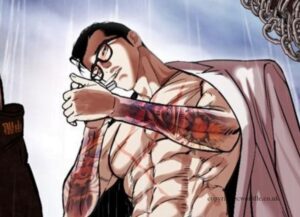Exploring Manga and Its Alternatives
Introduction to Manga
Manga, a style of comic or graphic novel originating from Japan, has become a global phenomenon, captivating readers of all ages with its diverse genres, compelling storytelling, and unique artistic style. Unlike Western comics, which often focus on superhero narratives, manga encompasses a wide range of themes and styles, from romance and horror to slice-of-life and fantasy. Manga is typically serialized in magazines, with popular series often being collected into tankōbon volumes, making it easily accessible to fans.
The Appeal of Manga
Several factors contribute to the immense popularity of manga:
- Artistic Diversity: Manga features a variety of art styles, from highly detailed illustrations to more simplistic designs. This diversity allows for personal expression and creativity, appealing to a broad audience.
- Rich Storytelling: Manga often delves deep into character development and intricate plots. The episodic nature of serialized storytelling enables authors to explore complex themes and character arcs over time.
- Cultural Influence: As a medium rooted in Japanese culture, manga offers insights into societal values, traditions, and contemporary issues. This cultural context can be intriguing for international readers.
- Wide Range of Genres: Manga caters to different demographics, including shōnen (targeted at young males), shōjo (targeted at young females), seinen (for adult males), and josei (for adult females). This genre categorization allows readers to find stories that resonate with their interests.
The Growth of Manga Globally
In recent years, the popularity of manga has exploded outside of Japan, particularly in North America and Europe. Publishers have translated and distributed countless titles, making them accessible to a wider audience. The rise of digital platforms has also played a crucial role in expanding the reach of manga, with services like VIZ Media, Crunchyroll, and Webtoon providing easy access to a vast library of titles.
Alternatives to Manga
While manga holds a special place in the hearts of many readers, several alternatives offer similar experiences in terms of storytelling and artistic expression. Here are some notable ones:
- Manhwa: Originating from Korea, manhwa shares many similarities with manga but is typically read from left to right. The art style often features more detailed backgrounds and a different aesthetic approach. Manhwa has gained popularity, particularly with titles like “Tower of God” and “Noblesse.”
- Webtoons: A digital format primarily from South Korea, webtoons are designed for mobile reading, with vertically scrolling layouts. This format has led to the rise of numerous popular series, such as “Lore Olympus” and “Let’s Play.” The accessibility and variety of genres available in webtoons have attracted a younger audience.
- Graphic Novels: While traditionally more associated with Western storytelling, graphic novels have become a popular medium that combines artwork and narrative in a single volume. Titles like “Maus” by Art Spiegelman and “Persepolis” by Marjane Satrapi have demonstrated the potential of graphic novels to tackle profound themes and personal stories.
- Comics: Western comics, especially those from the superhero genre, have long been a staple of comic culture. Publishers like Marvel and DC have established a vast universe of characters and stories. While they may differ significantly in style and format from manga, they still provide compelling narratives that captivate readers.
- Light Novels: These illustrated novels often include manga-style artwork and are aimed at young adult readers. Popular series like “Sword Art Online” and “The Melancholy of Haruhi Suzumiya” have garnered significant fanbases, bridging the gap between prose and visual storytelling.
- VyvyManga: is an online platform that serves as a comprehensive repository for manga titles across a multitude of genres. Whether you’re drawn to action-packed sagas, romantic tales, or fantasy adventures, VyvyManga is designed to cater to a broad audience.
Conclusion
Manga remains a vibrant and influential medium in the world of comics and graphic storytelling, beloved for its unique blend of art and narrative. However, the rise of alternatives like manhwa, webtoons, graphic novels, and light novels showcases the dynamic landscape of storytelling and the universal appeal of visual narratives. As readers continue to explore various forms of storytelling, the influence of manga and its alternatives will undoubtedly shape the future of comic culture worldwide. Whether through the pages of a manga, the scroll of a webtoon, or the panels of a graphic novel, the art of storytelling continues to thrive, offering something for everyone.














Post Comment